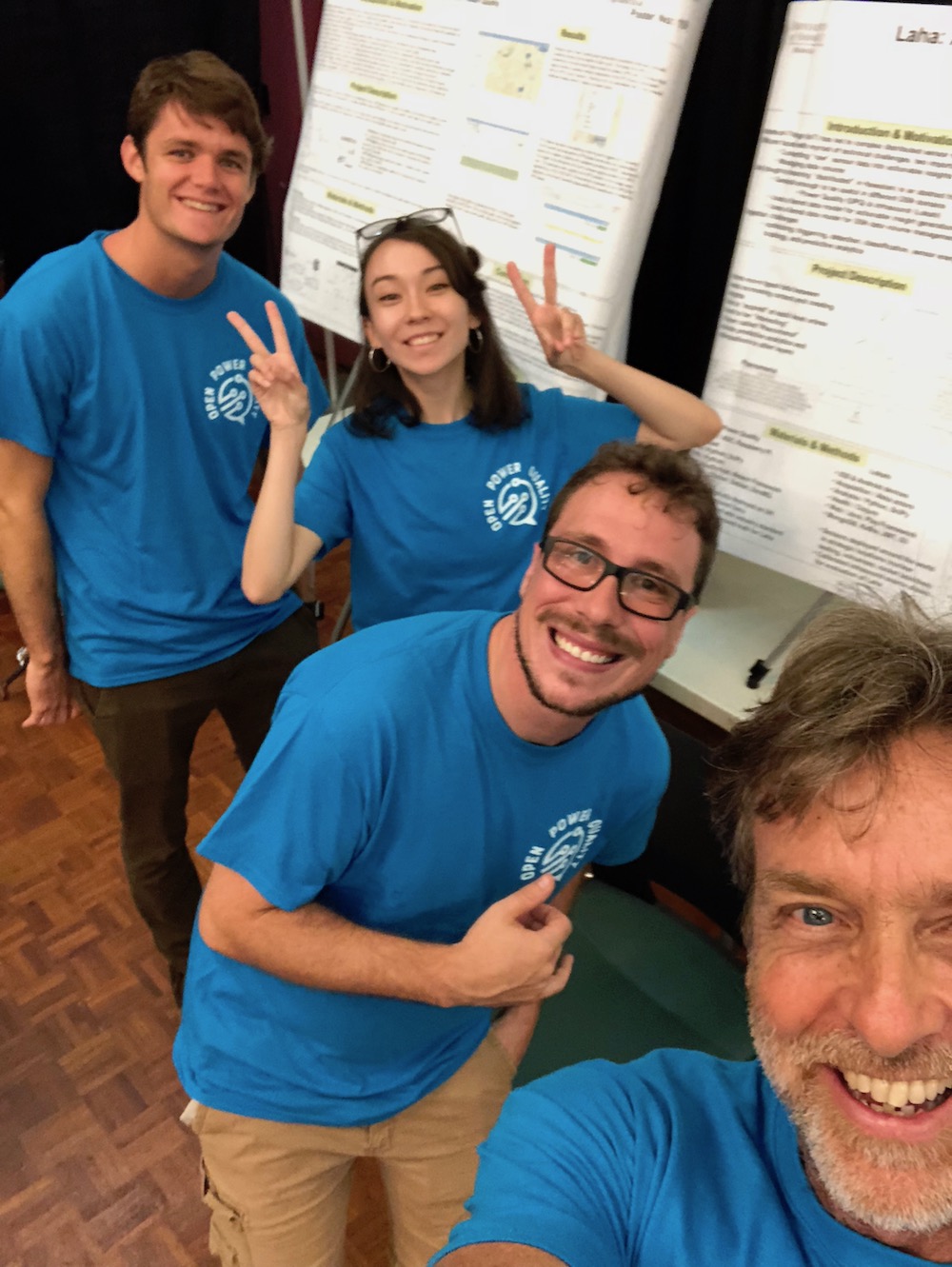
The OPQ team is delighted to announce the Anthony Christe has successfully completed his Ph.D. dissertation: "LAHA: A framework for adaptive optimization of distributed sensor frameworks". The complete dissertation is available at http://csdl.ics.hawaii.edu/techreports/2020/20-01/20-01.pdf.
Here's the abstract:
Distributed Sensor Networks (DSNs) face a myriad of technical challenges. This dissertation examines two important DSN challenges.
One problem is converting "primitive" sensor data into actionable products and insights. For example, a DSN for power quality (PQ) might gather primitive data in the form of raw voltage waveforms and produce actionable insights in the form of the ability to predict when PQ events are going to occur by observing cyclical data. For another example, a DSN for infrasound might gather primitive data in the form of microphone counts and produce actionable insight in the form of determining what, when, and where the signal came from. To make progress towards this problem, DSNs typically implement one or more of the following strategies: detecting signals in the primitive data (deciding if something is there), classification of signals from primitive data (deciding what is there), and localization of signals (when and from where did the signals come). Further, DSNs make progress towards this problem by forming relationships between primitive data by finding correlations between spatial attributes, temporal attributes, and by associating metadata with primitive data to provide contextual information not collected by the DSN. These strategies can be employed recursively. As an example, the result of aggregating typed primitive data provides a new higher level of typed data which contains more context than the data from which is was derived from. This new typed data can itself be aggregated into new, higher level types and also participate in relationships.
A second important challenge is managing data volume. Most DSNs produce large amounts of (increasingly multimodal) primitive data, of which only a tiny fraction (the signals) is actually interesting and useful. The DSN can utilize one of two strategies: keep all of the information and primitive data forever, or employ some sort of strategy for systematically discarding (hopefully uninteresting and not useful) data. As sensor networks scale in size, the first strategy becomes unfeasible. Therefore, DSNs must find and implement a strategy for managing large amounts of sensor data. The difficult part is finding an effective and efficient strategy deciding what data is interesting and must be kept and what data to discard.
This dissertation investigates the design, implementation, and evaluation of the Laha framework, which provides new insight into both of these problems. First, the Laha framework provides a multi-leveled representation for structuring and processing DSN data. The structure and processing at each level is designed with the explicit goal of turning low-level data into actionable insights. Second, each level in the framework implements a "time-to-live" (TTL) strategy for data within the level. This strategy states that data must either "progress" upwards through the levels towards more abstract, useful representations within a fixed time window, or be discarded and lost forever. The TTL strategy is useful because when implemented, it allows DSN designers to calculate upper bounds on data storage at each level of the framework and supports graceful degradation of DSN performance.
There are several smaller, but still important problems that exist within the context of these two larger problems. Examples of the smaller problems that Laha hopes to overcome in transit to the larger goals include optimization of triggering, detection, and classification, building a model of sensing field topology, optimizing sensor energy use, optimizing bandwidth, and providing predictive analytics for DSNs.
Laha provides four contributions to the area of DSNs. First, the Laha design, a novel abstract distributed sensor network that provides useful properties relating to data management. Second, an evaluation of the Laha abstract framework through the deployment of two Laha-compliant reference implementations, validated data collection, and several experiments that are used to either confirm or deny the benefits touted by Laha. Third, two Laha-compliant reference implementations, OPQ and Lokahi, which can be used to form DSNs for the collection of distributed power quality signals and the distributed collection of infrasound signals. Fourth, a set of implications for modern distributed sensor networks as a result of the evaluation of Laha.
The major claim of this dissertation is that the Laha Framework provides a generally useful representation for real-time high-volume DSNs that address several major issues that modern DSNs face.



